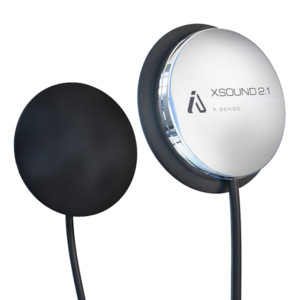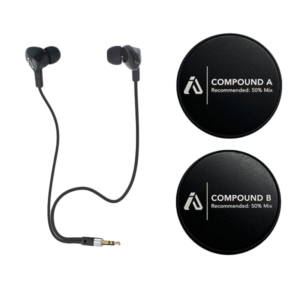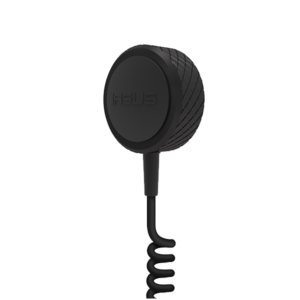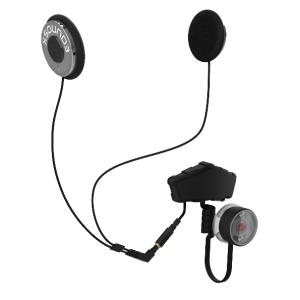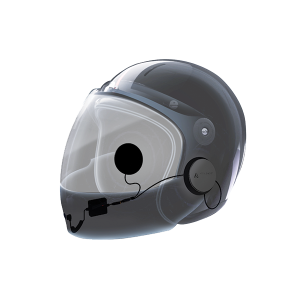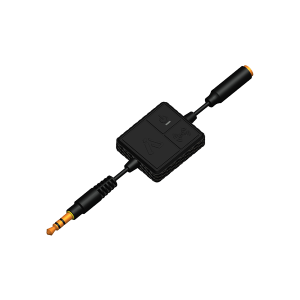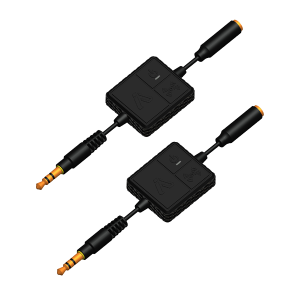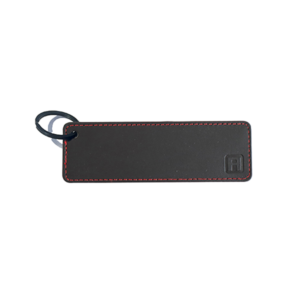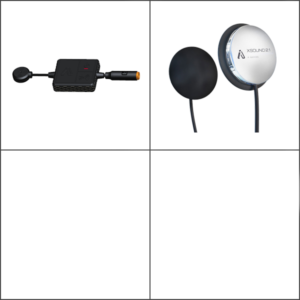Subtotal $203,254.55
IASUS CONCEPTS
Troubleshooting
For questions on setting up your throat mic, important audio hazards, and solutions to common problems, please read through the FAQ page.
XSound 3 and XSound 2.1R helmet speakers.
Installation guide video.
How do I properly install the XSound helmet speakers for best sound?
For proper installation, our XSound helmet speakers need to be touching your ears during use inside your helmet. You may use the included foam spacing pads to achieve this (XS3 only).

We also recommend that the helmet speakers are mounted in a more forward and lower position in the ear pockets to accommodate your ears more effectively.
Failure to do the above may cause damage to the speakers – the main cause being the volume gets turned up past acceptable levels to compensate for any wind and engine noise introduced by any gaps.
Before mounting the speakers in your helmet.

It is recommended to test and connect the helmet speakers directly to your smartphone or music player first using the 3.5mm cable and holding them to your ears as your music plays to confirm the optimal position before mounting them in your helmet.
My helmet speakers fit too tightly.
Certain brands of helmet and headgear are designed for a tighter fit and may not accommodate our speakers. Please determine whether your helmet can comfortably accommodate the extra 1/2 inch of helmet speaker on each side before your purchase.
Music crackles or pops when used with a motorcycle headset or Bluetooth receiver. Are they defective?
Try connecting the helmet speaker directly into a smartphone or music player and play at the same volume. If the crackling or popping disappears, your motorcycle headset or Bluetooth receiver is likely the cause. They tend to not support low-frequency outputs because typically their stock speakers do not deliver audio in that range.
While our XSound series of helmet speakers are designed and tested to be able to play at max volume on smartphones and music players without distortion, IASUS does not recommend listening to music at excessive levels which may lead to temporary or permanent hearing damage. Please proceed with caution.
As the XSound’s quality makes them the ideal choice to replace the stock speakers which motorcycle headsets come with, we are unable to confirm the compatibility with every model of motorcycle headsets (and Bluetooth receivers) out on the market.
The audio plays at a low volume or with lots of treble and lack bass.
Please use the foam pads (XSound 3 only) to position the speakers so they sit flush against your ears the same way you held them on your ears before installing them in your helmet.
The helmet speaker/ear adjustment tab.
 For tight fitting helmet enclosures, volume level and sound quality of your XSound 3 may be diminished if the ears get folded after putting on your helmet. When this happens, the audio does not have a direct path to your ears, hence the reduced volume and poor sound quality. Since it is difficult to access your ears due to the tight fit of your helmet, we included a Tab that was specifically to reach that are through either the space from your visor (when opened) or from the bottom of your helmet. The thin tab should be able to reach and be able to position your ears correctly. Also note that to optimize the sound quality of the Xsound 3, the speakers need to sit flush and directly on the ears. Sometimes, pending how you pivot the helmet the ear cavities are not aligned properly with your ears and that may also affect your audio experience. In order to benchmark the audio, we recommend that you listen to the helmet speakers on your ears directly prior to installation to have a feel for the sound and volume levels. The Xsound 3 package also includes a key ring for the Helmet Speaker Tab so that it can conveniently double as a great motorcycle key holder. This way you won’t forget to bring it or loose it when you are riding.
For tight fitting helmet enclosures, volume level and sound quality of your XSound 3 may be diminished if the ears get folded after putting on your helmet. When this happens, the audio does not have a direct path to your ears, hence the reduced volume and poor sound quality. Since it is difficult to access your ears due to the tight fit of your helmet, we included a Tab that was specifically to reach that are through either the space from your visor (when opened) or from the bottom of your helmet. The thin tab should be able to reach and be able to position your ears correctly. Also note that to optimize the sound quality of the Xsound 3, the speakers need to sit flush and directly on the ears. Sometimes, pending how you pivot the helmet the ear cavities are not aligned properly with your ears and that may also affect your audio experience. In order to benchmark the audio, we recommend that you listen to the helmet speakers on your ears directly prior to installation to have a feel for the sound and volume levels. The Xsound 3 package also includes a key ring for the Helmet Speaker Tab so that it can conveniently double as a great motorcycle key holder. This way you won’t forget to bring it or loose it when you are riding.
Are the cables on my XSound speakers faulty?
Due to global requirements for RoHs compliance, unfortunately, products have a shelf life these days as cables need to be bio degradable. Our headsets are no exception so over time the cable material will break down. This is the same for all wired headsets from Bose or Sony as well.
Throat Mic - NT3-R, GP3-R and Sniper Pro II
Before using your NT3-R/GP3-R throat mic system.
- Plug the mic cable into the audio input port of your device of choice (2-way radio, mobile phone, Xbox, computer).
- Insert the contour molded earpiece so that it sits comfortably and securely in your ear.
- To talk, push and hold down the PTT (push-to-talk) device, which can be clipped anywhere you find most convenient.
- If the sound quality is muffled, move the transponder further away.
You should keep readjusting the throat strap and testing the unit until you find the sweet spot. It will be different for everyone, depending on factors such as your individual anatomy, voice quality, and facial hair. Moving the transponder closer to your voice box at the center of your throat will boost the volume, but may cause distortion. Everybody has a sweet spot that balances volume and clarity; when you find it, fasten the strap securely at the back.
How does the NT3-R/GP3-R work?
IASUS Noise Terminator throat mics are different from conventional headset communication systems. Standard boom microphone systems are based on traditional acoustic induction from sound waves in the air. By contrast, NT3-R microphones pick up voice signals via vibrations generated by the user’s larynx through an aluminum transponder that rests on just off the center of the throat. This way, our throat mic systems “eliminate” background noise by simply not picking them up, making NT3-R ideal for use in noisy environments and in situations where quiet, covert communication is necessary.
A lot of throat mics use a double-transponder design in which each transponder rests on either side of the throat. This is not ideal, because most people do not have perfectly symmetrical necks, which leads to an imbalance of the transmission wavelengths from each transponder and causes distortion. IASUS has engineered the NT 3 with a single transponder that hits the “sweet spot” about 1 to 2 inches from the center of your throat.
How can I avoid audio hazards and hearing damage?
In particularly noisy environments such as inside clubs, at concerts, and on top of motorcycles, pairing the NT3-R system’s earpiece with an earplug is a MUST. This is because in order to register sound, the brain processes the dominant sound level from either the left or right ear. That means that when using the NT3-R in a loud environment, the volume of the audio source needs to be louder than the external noise in order for your brain to “hear,” resulting in potential loss of hearing in high volume situations.
What phone or two-way radio is the NT3-R/GP3-R compatible with?
The NT3-R/GP3-R system works with most popular mobile phone and 2-way radio models. Please refer to our full compatibility table for details on the required adaptors and compatible model numbers.
Better audio sources such as higher-end radios result in better communication transmission. Certain low-end radios are not up to the performance specifications of our throat mics. We recommend pairing our headsets with higher-powered UHF radios.
How to optimize communication using a throat mic?
Unlike traditional mics, throat mic transponders have a tendency to sound “muffled” (sounds like you have a cold) because nasal sounds do not get transferred through vibrations in the neck. The IASUS throat mics through three generations of development are the most refined on the market today. When used properly they deliver the clearest communication under extreme environmental conditions such as wind and noise.
When using the throat mic, it is important to speak clearly and to maintain a normal audible tone (speak as if you are talking in an ambient room). This is not inherently natural, as we tend to speak louder when the environment is noisy or windy but this technique will optimize the sound quality of our transponder communication.
The sound quality coming from my transponder isn't very good. What's wrong?
Usually this is simply a matter of finding the ideal location for the transponder on your throat. Everybody has a “sweet spot” that balances volume and clarity, and it is generally found about 1 to 2 inches from the center of your throat. However, its location is different for everyone and depends on factors such as your individual anatomy, voice quality, and amount of facial hair. Moving the transponder closer to your voice box (at the center of your throat) will boost the volume, but may cause distortion. If the sound quality is muffled, move the transponder further away from the center of your throat. You should keep readjusting the throat strap and testing the unit until you find the sweet spot.
Another potential cause of poor sound quality is the device you are using to transmit the signal. Better audio sources—such as higher-end radios—result in better communication. We recommend pairing our headsets with higher-powered UHF radios. Certain low-end recreational radios are not up to the performance specifications of our throat mics and can interfere with their performance.
When using the single earpiece in a noisy environment, I still cannot hear clearly. How can I fix this?
In particularly noisy environments such as inside clubs, at concerts, or while under heavy fire, pairing the NT 3 system’s earpiece with an earplug is a MUST. This is because in order to register sound, the brain processes the dominant sound level from either the left or right ear. That means that when using the NT3-R in a loud environment, the volume of the audio source needs to be louder than the external noise in order for your brain to “hear,” resulting in potential loss of hearing in high volume situations. Plugging the open ear prevents this sensory imbalance.
Why doesn't my phone's voice activation function work with the noise terminator throat mic?
IASUS Noise Terminator Throat Mic systems work quite well with the voice activation (VOX) functions of many cellular phones. However, users must first re-record the voice tag using their throat mic. The phone’s software will not match the user’s voice when using the Noise Terminator with a tag recorded under normal conditions. Also, remember to wait for the signal from the phone first before speaking to activate the voice tag.
There is a very loud beep sound when I use the NT3-R/GP3-R with my FRS radio. How can I get rid of this?
Pressing the CE+ button when you turn on your FRS will remove this loud sound.
My radio continually transmits when I plug in my headset. What's wrong?
You need to make sure the radio is powered-off when you plug in the headset. The headset should function normally after the radio is powered on again.
My radio will not charge.
Please make sure that the radio is positioned correctly on the charger so that all four contacts are lined up with the charging rails.
Feel free to contact us concerning our products using our customer inquiry form. You can also contact your IASUS reseller’s customer support representatives or refer to the handy guides offered by Headsetgadgets, Soundrite, and Evolution Tactical. There are also some other resources on this site that may help you: FAQ’s and Product Manual Downloads.





